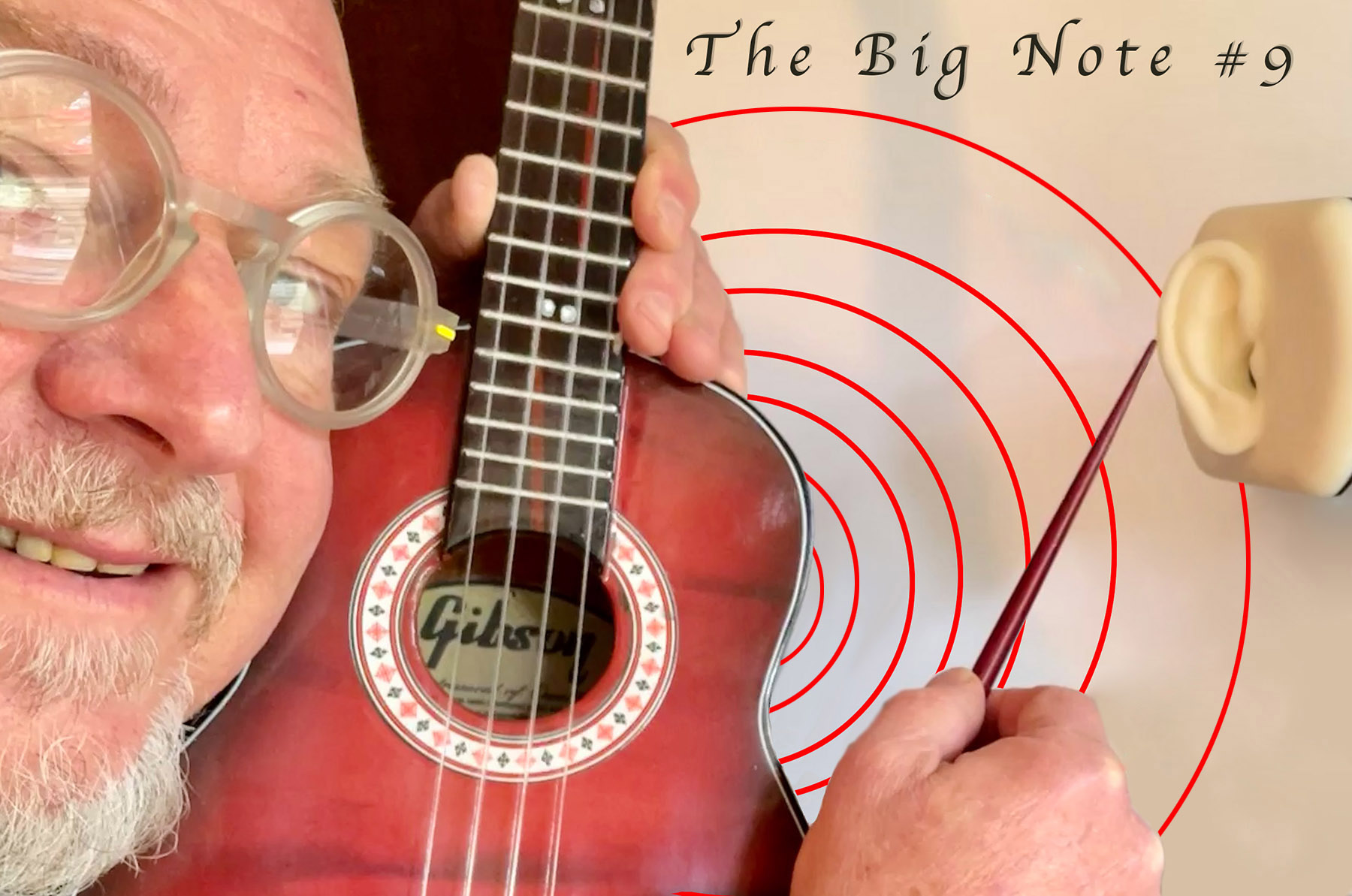The Big Note #9 How We Hear
Today on The Big Note we talk about the process of how sound and music is heard and processed by our brain and some of the effects it has on the body. Lot’s of excellent music is played as well of course! So how do we experience music? How do we hear sound and music and what happens in our bodies when we do? All sound we hear, including music is created by molecules of air bumping into each other to create waves of high pressure and low pressure – referred to as compression and rarefaction. These alternations of high and low pressure form a wave that travels outward from the sound source until it reaches the tympanic membrane, the eardrum, in the ears. Individual molecules don’t travel from the sound source to our ears, rather a pressure front is made by molecules forcing adjacent molecules to move and so on and so on, kind of like dominoes falling or the action of those desktop doodads with the silver balls next to each other hanging from a frame called Newtons cradles Sound can also be transmitted through liquids and solids in this way The nature of the sound is dependent on many variables including the intensity, duration and frequency of the waves.
11:05 am: Waves by Elise Drake from In Waves
11:05 am: Waves by Race Randolph (Feat. The Choir Imperfect)
11:05 am: Ringing In My Ears by Dan Sultan from Ringing In My Ears
11:05 am: Lot Of Nerve by Clint Wilson from Lot of Nerve
11:05 am: Slave To The Rhythm by Grace Jones from Slave To The Rhythm
11:05 am: Cars In Space by Rolling Blackouts Coastal Fever from Cars In Space
11:05 am: Cars by Gary Numan from The Pleasure Priciple
11:05 am: Sweet About Me by Gabriella Cilmi from Lessons To Be Learned
